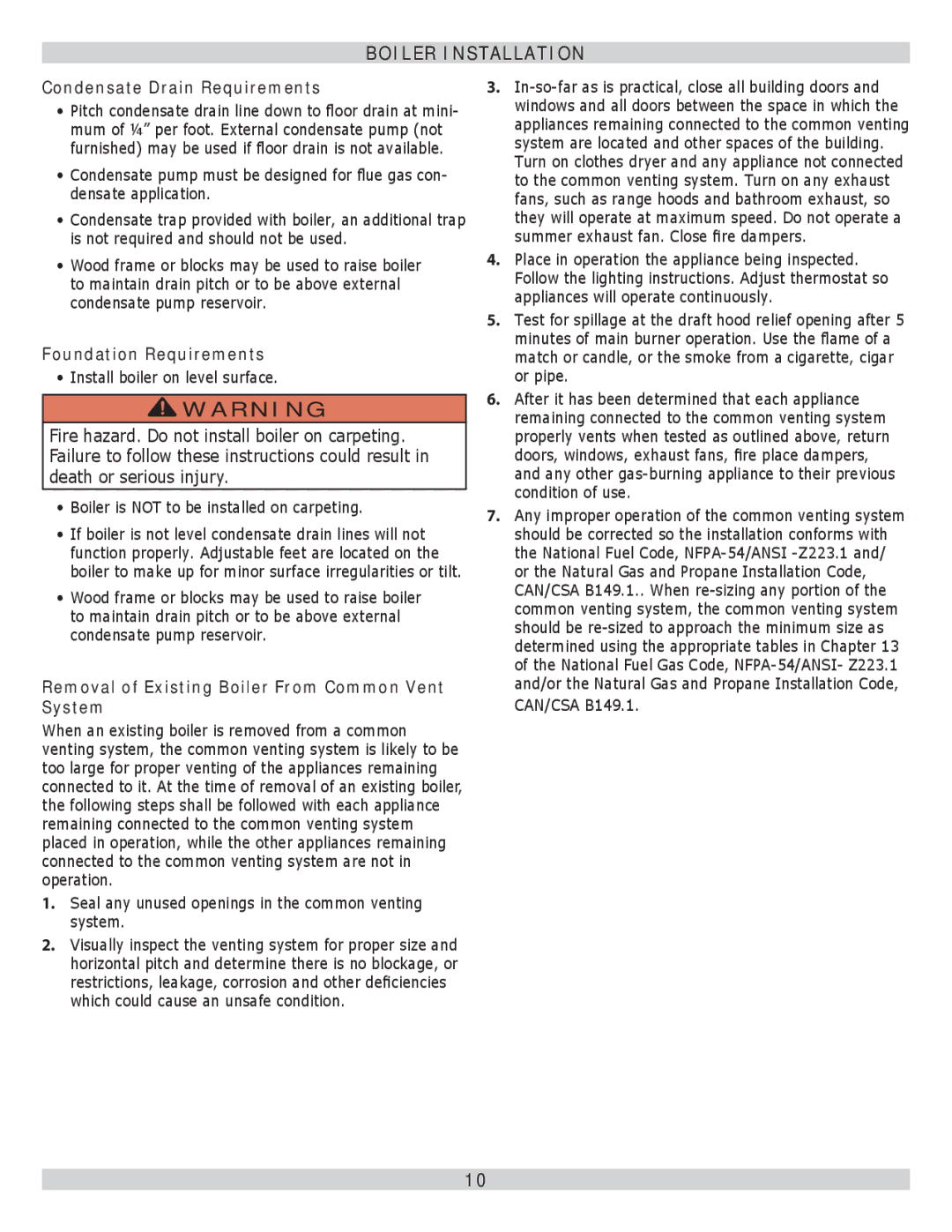GWB9-050IH-2, GWB9-100IH-2, GWB9-075IH-2, Gas-Fired Hot Water Boiler specifications
Lennox International Inc. is a prominent player in the HVAC industry, renowned for its innovative solutions and high-efficiency products. Among its standout offerings is the GWB8 Gas-Fired Hot Water Boiler, available in various models including GWB8-262E-2, GWB8-245E-2, GWB8-280E-2, and GWB8-299E-2. These units are designed to provide reliable and efficient heating solutions for residential applications.One of the key features of the GWB8 series is its energy-efficient operation. These boilers are designed to achieve an AFUE (Annual Fuel Utilization Efficiency) rating of up to 84%, allowing homeowners to save on energy costs while reducing their environmental footprint. The product utilizes a cast-iron heat exchanger, which promotes optimal heat retention and distribution, ensuring consistent performance throughout the heating season.
The GWB8 series incorporates advanced technologies to enhance comfort and efficiency. A significant innovation is the use of a power venter system that facilitates venting through the sidewall of the home, providing installation flexibility while maintaining safety standards. Additionally, the boilers are equipped with a Honeywell integrated control for precise temperature management and modulating gas valve technology, which adjusts the gas flow to match the heating demand, further optimizing fuel consumption.
Another defining characteristic of the GWB8 models is their durable construction. Designed to withstand the rigors of heating applications, these models feature a robust, powder-painted steel cabinet that helps prevent rusting and corrosion. The access doors are insulated, contributing to overall efficiency while allowing easy maintenance and serviceability.
The GWB8 series is also designed with homeowner comfort in mind. The quiet operation of these boilers ensures that they blend into the living environment without disruptive noise, making them an ideal choice for residential settings. The models are compatible with various heating systems, including hydronic heating, making them versatile and reliable.
Overall, Lennox's GWB8 Gas-Fired Hot Water Boiler series is an excellent choice for homeowners seeking efficient, durable, and reliable heating solutions. With a combination of advanced technologies, energy-efficient performance, and practical features, these boilers set a high standard for residential heating systems in today's market.

